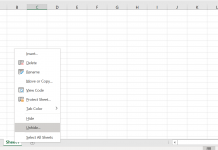The mysterious hiberfil.sys
It happens to most users of Windows XP. One day you are searching for a file or cleaning up the PC’s hard drive and you encounter a huge file – hiberfil.sys.
Normally located at C:hiberfil.sys, its size can vary from 250MB to over 2GB. You try to delete the file – it’s not a good idea to delete files you don’t understand – but Windows won’t oblige anyway. That’s why you are here.
Windows XP has a feature that is not very well documented and it will be totally new to users of older systems such as Windows 95 or 98. This feature introduced to most users for the first time in XP is called Windows hibernation. Instead of shutting down and restarting your computer, Windows takes a snapshot of everything running on your system, copies it to the hard drive and then turns off most of your hardware. To wake up from hibernation you normally move the mouse or hit the spacebar on the keyboard.
In theory, it is supposed to be a quick shortcut or power saving option that allows you to leave your PC in suspended animation until you are ready to work again. However, in practice, most people find little time difference between shutting down and using hibernation. For people who use drive imaging to backup their system, the hiberfil.sys file can bloat the backup files - making them larger (sometimes over 1GB bigger) and therefore slower to copy/restore.Hibernation temporarily 'freezes' the computer when the PC becomes inactive, so it won't work if you have tasks running constantly (eg downloading files). However it can be handy if you want the computer to sleep after a task has completed (such as creating a video).
OK, that's the role of hibernation - so what is the hiberfil.sys file and why is it so big? Hibernation takes everything in memory and writes it to your hard drive as the hiberfil.sys file. If you have 512MB of memory, then hiberfil.sys will be about 512MB. If you have 2GB, the file will be around 2GB. The important point to remember is that even if you don't use hibernation, hiberfil.sys will still take up this huge amount of disk space. The way to remove the file is to turn off the hibernation feature (by default, hibernate is activated automatically when XP is installed). Here's how to do it:
- Open the Windows Control Panel
- Double-click Power Options
- Click the Hibernate tab, de-select the 'Enable hibernate support' check box, and then click Apply.
- Restart your computer and hiberfil.sys should be automatically deleted (this is not always the case - simply delete it if Windows didn't do it for you).
- If you change your mind in the future and would like to use hibernation, go back to the Hibernate tab as described in the first three steps and check the box 'enable hibernation'.






